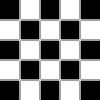The 34th Division was an infantry division of the British Army formed during World War I in April 1915 as part Kitchener's Army, part of the K4 Army Group. The division landed in France in January 1916 and spent the duration of the war in action on the Western Front.
The division was originally made up of Pals battalions, notably the 10th Lincolns, known as the Grimsby Chums, and two brigades of the Northumberland Fusiliers; the Tyneside Scottish and Tyneside Irish. The division's first major action was the attack at La Boisselle on the first day of the Battle of the Somme during which the division suffered heavy casualties and many of the original Pals were killed.
101st Brigade10th (Service) Battalion (Grimsby Chums), The Lincolnshire Regiment (to 103rd Bde February 1918)11th (Service) Battalion, The Suffolk Regiment (until May 1918)15th (Service) Battalion (1st Edinburgh), The Royal Scots (Lothian Regiment) (until May 1918)16th (Service) Battalion (2nd Edinburgh), The Royal Scots (Lothian Regiment) (until May 1918)2/4th Battalion (TF), The Queen's (Royal West Surrey Regiment) (from June 1918)2nd Battalion, The Loyal North Lancashire Regiment (from June 1918)102nd (Tyneside Scottish) Brigade The original Tyneside Scottish battalions were:
20th (Service) Battalion, Northumberland Fusiliers21st (Service) Battalion, Northumberland Fusiliers22nd (Service) Battalion, Northumberland Fusiliers23rd (Service) Battalion, Northumberland FusiliersIn February 1918 the 20th and 21st Battalions were disbanded and in June, the 22nd Battalion (3rd Tyneside Scottish) joined the 48th Brigade, 16th (Irish) Division while the 23rd Battalion (4th Tyneside Scottish) joined the 116th Brigade, 39th Division.
25th (Service) Battalion, Northumberland Fusiliers (from February 1918 until June 1918)1/4th Battalion, The Cheshire Regiment (from July 1918)1/7th Battalion, The Cheshire Regiment (from July 1918)1/1st Battalion, The Herefordshire Regiment (from June 1918)103rd (Tyneside Irish) Brigade The original Tyneside Irish battalions were:
24th (Service) Battalion, Northumberland Fusiliers25th (Service) Battalion, Northumberland Fusiliers26th (Service) Battalion, Northumberland Fusiliers27th (Service) Battalion, Northumberland FusiliersIn February 1918, the 24th, 26th and 27th Battalions were disbanded and the 25th Battalion (2nd Tyneside Irish) transferred to the 116th Brigade, 39th Division. For the remainder of the war, the brigade structure was:
1st Battalion, The East Lancashire Regiment (from February 1918 until May 1918)10th (Service) Battalion (Grimsby Chums), The Lincolnshire Regiment (from 101st Bde February 1918 until June 1918)1/5th (Dumfries and Galloway) Battalion, The King's Own Scottish Borderers (from June 1918)1/8th Battalion, The Cameronians (Scottish Rifles) (from June 1918)1/5th (Renfrewshire) Battalion, The Argyll & Sutherland Highlanders (from June 1918)On the First day on the Somme, the division had the largest number of casualties of the British divisions, the 102nd Brigade had 2,324 casualties and the 103rd Brigade incurred 1,968 losses. From 6 July – 22 August, the brigades were swapped with the 111th and 112th brigades of the 37th Division, which was holding the line on a quiet sector at Vimy Ridge.
Commanders
Major-General Edward Ingouville-Williams 1915 – 22 July 1916Major-General C. L. Nicholson 22 July 1916 – 
